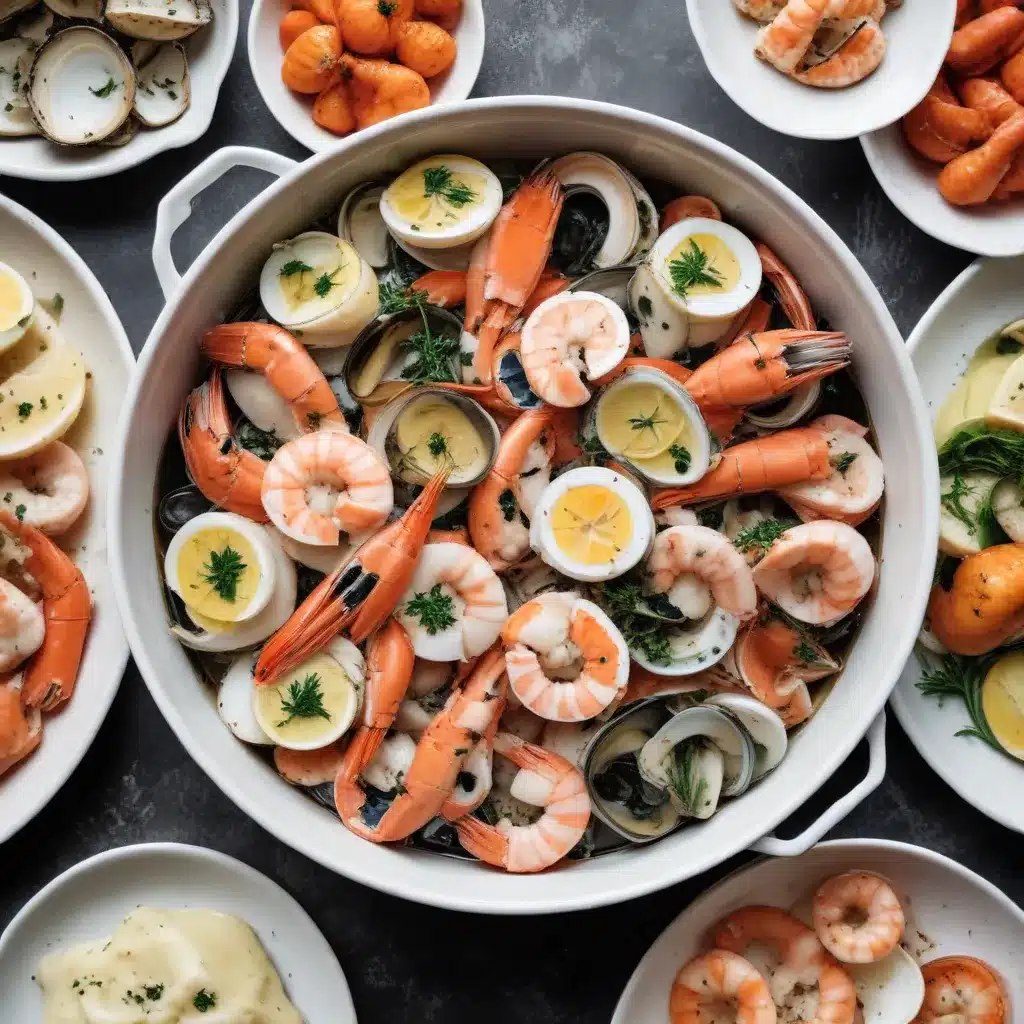
In the world of culinary excellence, the secret to creating mouthwatering seafood dishes often lies in the careful consideration of storage and handling. As a seafood dining expert for Fish Tales Café, I’ve discovered that the key to unlocking the true potential of cod and other marine delicacies lies in understanding the nuances of proper preservation.
Seafood Preservation Fundamentals
Maintaining the freshness and quality of seafood begins with a fundamental understanding of temperature control, humidity management, and strategic packaging. Temperature control is paramount, as even minor fluctuations can dramatically impact the integrity of the product. Seafood should be stored at consistently cool temperatures, ideally between 32°F and 40°F, to inhibit the growth of harmful bacteria and preserve the delicate flavors.
Equally important is the management of humidity and airflow. Seafood requires a carefully balanced environment to prevent moisture loss or condensation buildup, which can lead to undesirable textures and accelerated spoilage. Proper storage containers or display cases should ensure adequate airflow while maintaining the optimal humidity levels.
The selection of packaging materials is also crucial. Airtight, moisture-resistant containers or vacuum-sealed pouches can help extend the shelf life of seafood by limiting exposure to air and contaminants. For delicate species, modified atmosphere packaging with carefully controlled gas ratios can further enhance preservation.
Optimal Seafood Holding Conditions
When it comes to storing seafood for optimal culinary use, the temperature range, humidity levels, and storage durations must be meticulously observed. Finfish, such as cod, should be maintained at temperatures between 32°F and 34°F, with a relative humidity of 85-90%. Under these conditions, whole fish can typically be held for 3-5 days, while fillets or steaks may last 2-3 days.
For shellfish, the recommended temperature range is slightly higher, at 34°F to 36°F, with a relative humidity of 90-95%. Shucked or cooked shellfish have a shorter shelf life, generally 2-3 days, while live bivalves like oysters and clams can be stored for 5-7 days when properly handled.
Proper storage duration is equally crucial. While some seafood can be frozen for extended periods, fresh products should be used within the recommended timeframes to ensure peak flavor and texture. Regularly monitoring inventory and practicing first-in, first-out stock rotation can help minimize waste and maintain the highest quality.
Seafood Quality Monitoring Techniques
Ensuring the freshness and safety of seafood requires a multi-faceted approach, combining sensory evaluation, chemical analysis, and microbial testing. Trained staff should routinely assess the appearance, aroma, and texture of seafood products, looking for any signs of spoilage or deterioration.
Additionally, temperature monitoring and recordkeeping can provide invaluable data on the storage conditions, helping to identify any potential issues before they compromise the product. By keeping a close eye on freshness indicators, such as volatile organic compounds or bacterial counts, seafood professionals can proactively address any quality concerns.
Specialized Storage for Seafood Types
Handling different seafood species requires tailored storage solutions. Finfish, like cod, benefit from being stored whole or in large portions to minimize surface area exposure. Shellfish, on the other hand, require careful monitoring to ensure their shells remain tightly closed, indicating their freshness.
Delicate species, such as sashimi-grade tuna or live crab, demand the utmost care. These products may require temperature-controlled displays or sous vide packaging to maintain their pristine condition. Proper handling, from receiving to service, is essential to preserving their integrity.
Inventory Management for Seafood Dishes
Effective inventory management is a critical component of successful seafood storage. Implementing a robust stock rotation system, such as first-in, first-out (FIFO), helps ensure that the freshest products are used first, reducing waste and maintaining menu consistency.
Detailed shelf-life tracking can also aid in making informed purchasing decisions and planning menu offerings. By closely monitoring the remaining shelf life of stored seafood, chefs and managers can optimize their inventory and minimize the risk of spoilage.
Seafood Preparation and Handling
Careful preparation and handling techniques are paramount to preserving the quality of seafood. Pre-cooking preparation, such as brining, marinating, or par-cooking, can enhance the seafood’s resilience during storage and service.
The chosen cooking method can also impact the storage requirements. Delicate preparations, like poaching or en papillote, may require more immediate consumption, while roasted, grilled, or sautéed seafood can often withstand longer holding times.
Post-cooking storage solutions, such as chilling or holding in a warm environment, can further extend the shelf life of prepared seafood dishes, ensuring they maintain their optimal flavor and texture.
Regulatory Compliance for Seafood Storage
Seafood storage and handling are subject to strict food safety standards and regulations. Adherence to these guidelines, which include proper labeling, traceability, and temperature monitoring, is essential for ensuring the well-being of customers and maintaining compliance with local health authorities.
Regular inspections and audits by regulatory agencies can help seafood establishments identify and address any potential issues, reinforcing their commitment to food safety and quality.
Sustainable Seafood Storage Practices
In the ever-evolving landscape of culinary excellence, the consideration of sustainability has become increasingly important. Seafood establishments can embrace eco-friendly storage solutions, such as energy-efficient cooling systems and waste reduction initiatives, to minimize their environmental impact.
By adopting sustainable practices, seafood professionals can not only preserve the quality of their products but also contribute to the long-term viability of marine ecosystems. This holistic approach to seafood storage aligns with the growing consumer demand for responsible and environmentally conscious dining experiences.
At Fish Tales Café, we are committed to elevating seafood dishes through the mastery of optimal storage techniques. By meticulously controlling temperature, humidity, and handling protocols, we ensure that every cod fillet, seared scallop, or grilled salmon that graces our menu is a testament to culinary excellence. Join us on this journey of seafood perfection, where freshness, flavor, and sustainability converge to create unforgettable dining experiences. Visit us at Fish Tales Café to discover the difference that optimal seafood storage can make.

